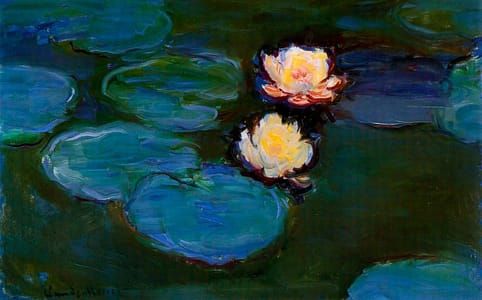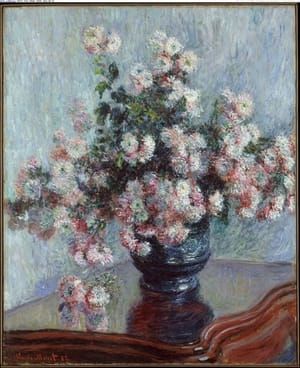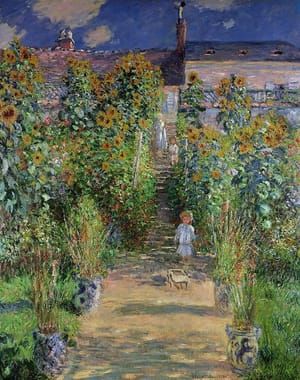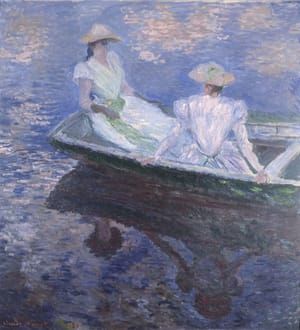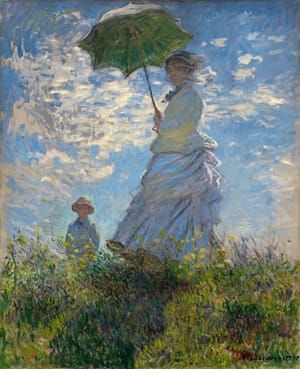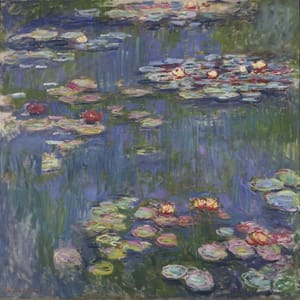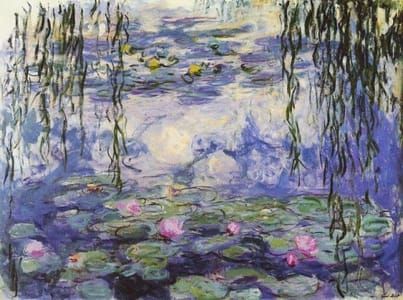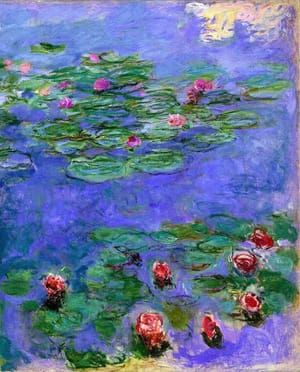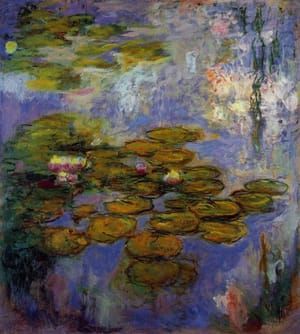

Water Lilies
Claude Monet
Were it not for the title, this picture would be difficult to interpret, for all one sees at first are dark-blue, dark-green and violet color spaces. Then, slowly, structures emerge. A bank appears, and now one clearly sees the waterlily leaves on the surface of the water. Okay, they’re blue, but their shape is recognizable and allows for no other interpretation.
But by now at the latest one is forced to realize that Monet was not concerned in the slightest with the depiction of nature and its details. They are for him purely aids to his studies of light and color. The painterly play with colors within a pictorial structure is more important to him than the simple imitation of reality. But maybe, subjectively, he did see the waterlilies as blue, reflecting the dark water. The object in itself is in any case not important here. Any perspective, of which we have no more than a hint in the line of the bank, is soon abandoned once more. The uncompleted edges of the picture are a further indication of the spontaneity of the painting process. All that seems to concern the painter are the colors, transferred to the canvas at the moment of perception. As a result they become the immediate communication of direct experience.
In the 1880s Monet had acquired an estate in Giverny, a village near Vernon where the Epte flows into the Seine. Here he created his own garden realm in line with his artistic ideas, with plants of his own color choice, with paths, and a curving Japanese bridge. Until his death, he now only worked here, developing his idea of Impressionist painting.
(http://www.wallraf.museum/en/collections/19th-century/masterpieces/claude-monet-water-liliers-nympheas-c-191517/the-highlight/)
Uploaded on Nov 26, 2017 by Suzan Hamer
Claude Monet
artistArthur
coming soon
